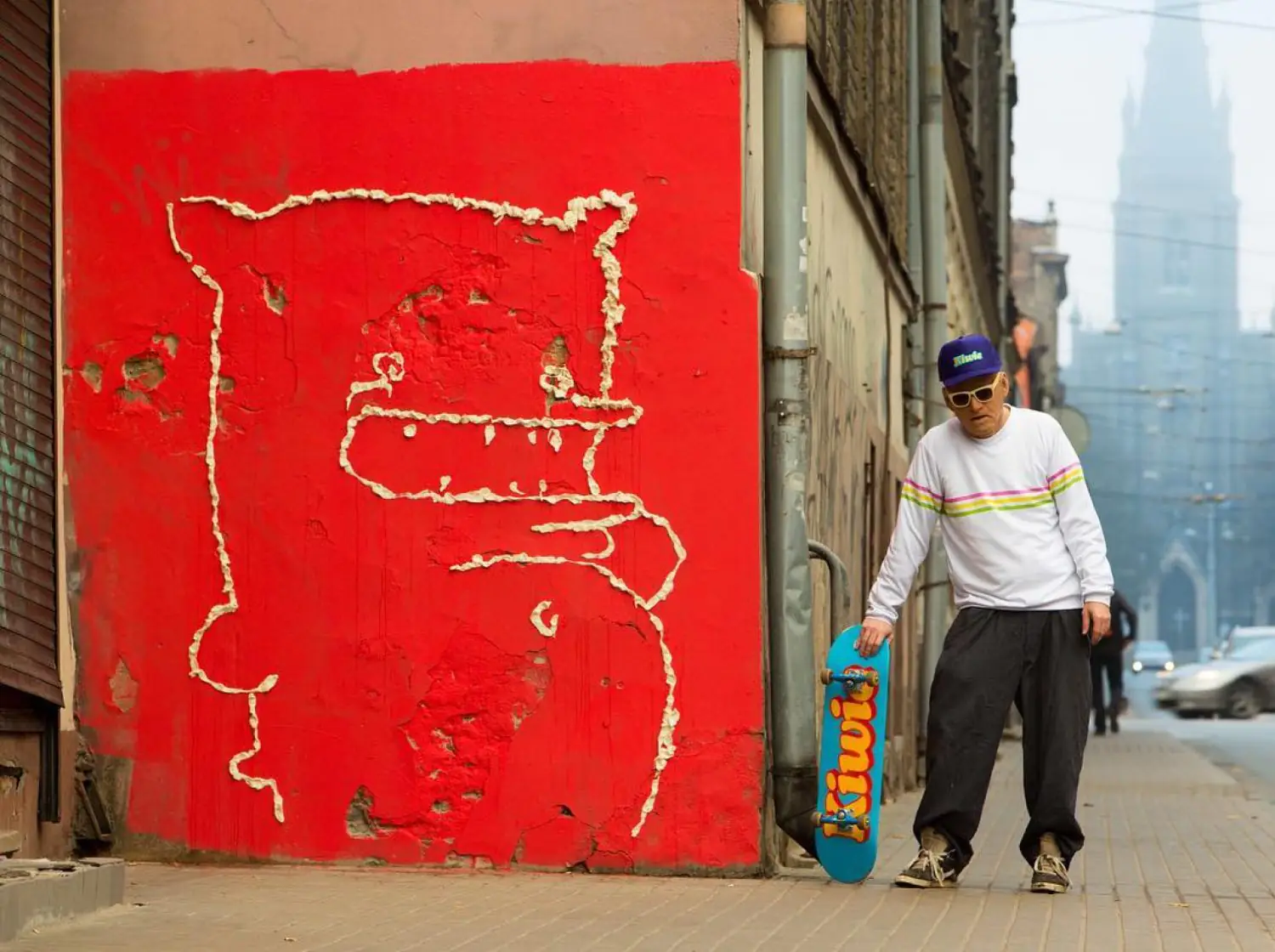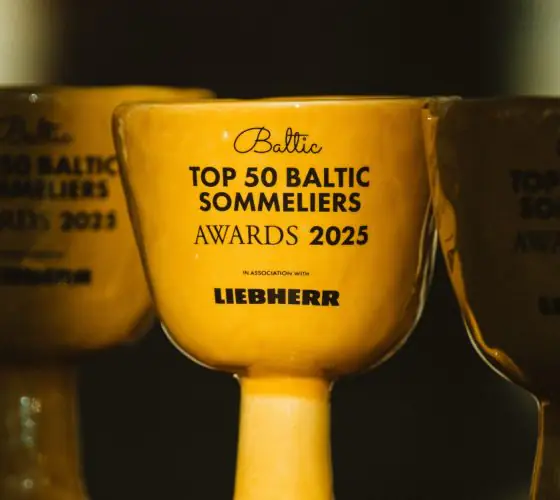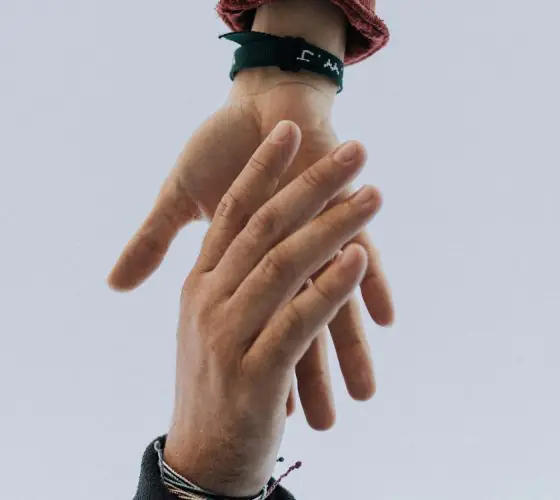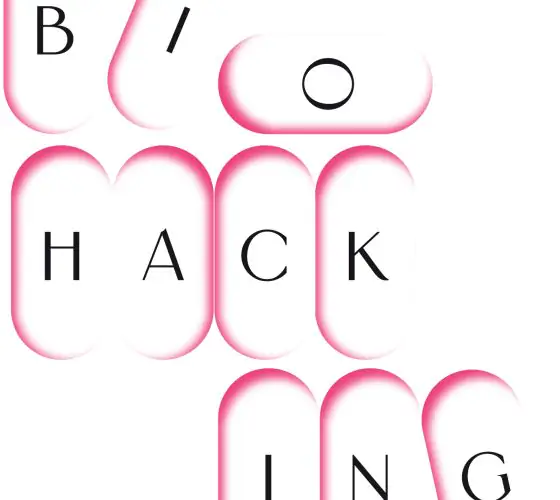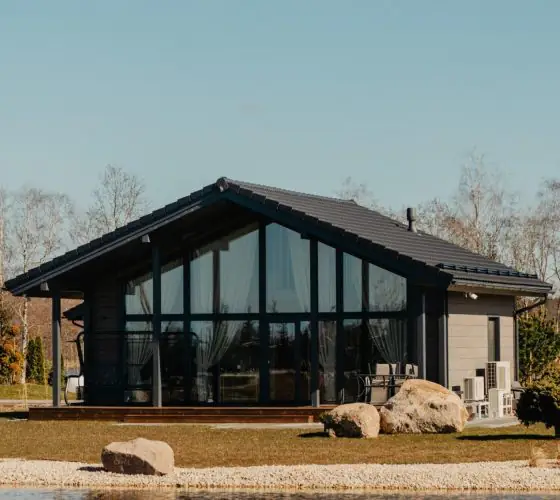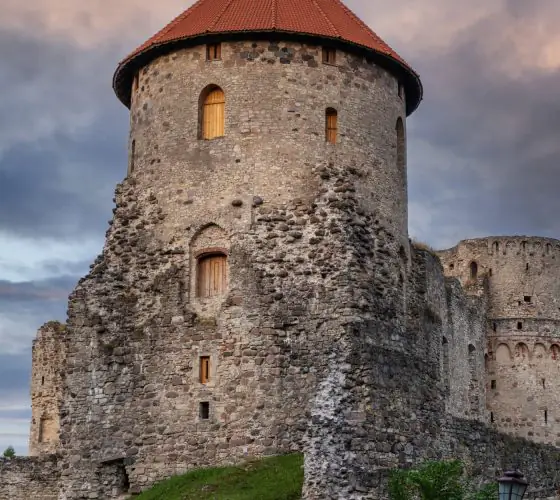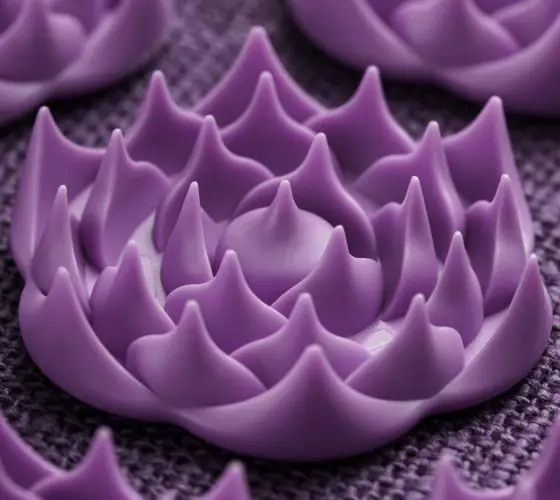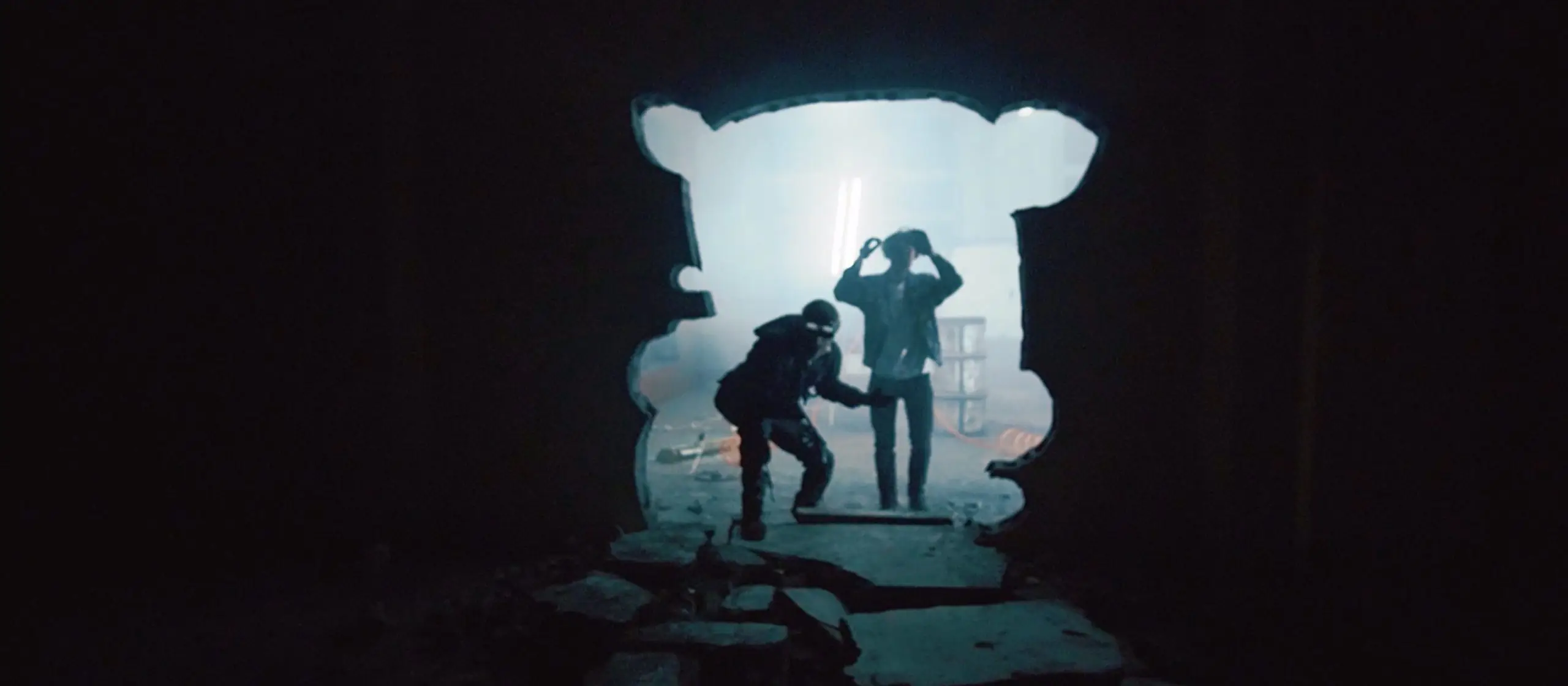
That same KIWIE monster appeared in 2005/2006. But there’s always a backstory, right? Let’s take an even bigger step back—to your childhood and the very first artistic ambition.
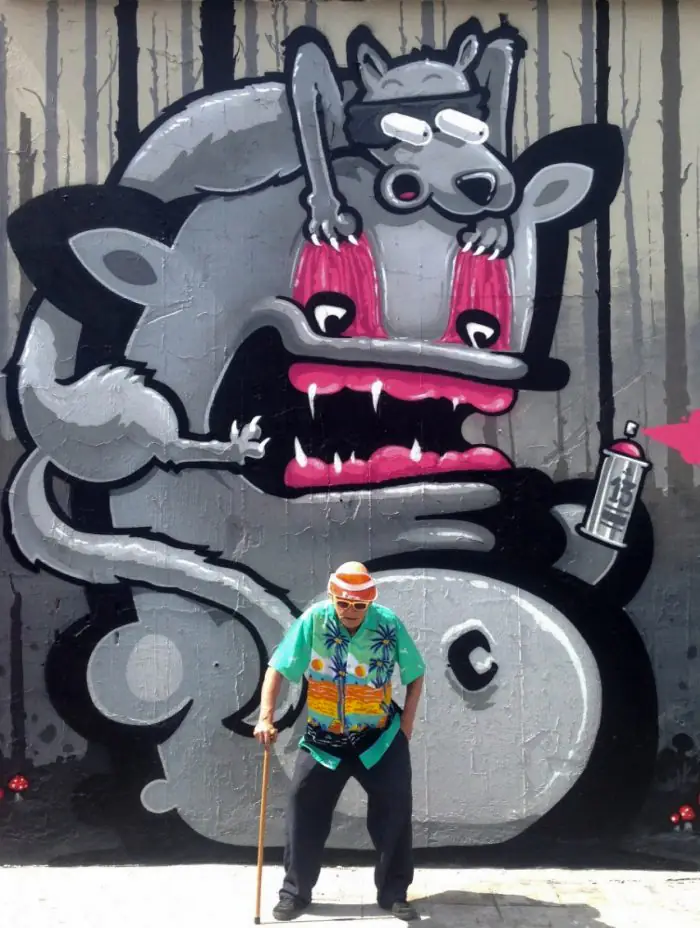
Well, I’ve been painting walls since 2002. Who was I then? Just a kid with an urge to create.
But it all started even earlier…
My brother and I knew from a young age that we would end up in creative fields. It was so natural that at the start it even didn’t feel like a big deal, it was just something we always did after school. We lived in our own small universe and there everyone could draw whatever one can think of.
We even had competitions, challenging each other to draw the same subject by going into separate rooms, drawing and then comparing our results. That’s how we learned to draw some simple and later complex things.
I can’t even explain my decision to become an artist, it was never a decision. How do people choose their hobbies and jobs? You just do it because it feels right. And to this day, if something happens in life, the easiest way for me to get back on track is to actually go paint and create.
Recently I found artworks I created at age 2, as a child I was just drawing. I remember it made my parents happy each time I created something, so I wanted to do it more, because it felt good and seemingly everyone else around was excited as well. So it was a win win.
When I got my hands on the first Art History books, it became obvious that all the established artists had their own distinctive style and approach to art. I think I found Dali, and I was amazed that even though he was a painter, he also designed things, and created whatever he wanted. I mean, he even designed the Chuppa-Chups logo. It kinda opened my eyes, that even if one is a painter, one can design other stuff as well. Because it’s not about what technique or medium one chooses to create anything, it’s about the creative mindset.
Also, Dali was the one who inspired me to find a really short and memorable artist name as I believed it played some role in his success. So I started my search for my distinctive style, name and concept. I had to stand out to fit in.
And what kind of action did you take?
I started skateboarding and drawing walls. Graffiti was everywhere in Riga, and I was always wondering, “who did that?” It was both mysterious and intriguing.
Naturally I also started with tags and graffiti, writing my name on the walls. But at some point I realised: tags are everywhere, it’s so difficult to stand out when you do what everybody else is doing. That’s where I started to research symbolism and language of emotions. I wanted to try to do the opposite of what everybody else was doing.
Back then, Riga’s street culture was pretty aggressive. Spray cans and belongings were constantly stolen or taken by rivals. Other artists bullied me, asking, “What the hell are you doing, this is not real graffiti!”
That was one of the triggers I came up with my monster, who could look cute and maybe chubby at first, but when he opens his mouth, he will definitely eat you kid.
The idea was to paint the monster over my rival graffiti pieces, literally crushing their letters with KIWIE’s massive teeth. Everything started with a conflict, and Kiwie monster was simply an answer to a problem. Then while I was painting them more, the general public started to notice them.
At first it was intended as a one time thing, but then I started to dig deeper and explore more. Pretty fast the concept grew and so it needed a name as everybody started to call him by different random names. I wanted it to be short, easy to be remembered [ Inspired by Dali ] and with a double meaning. For example, if someone heard “artist KIWIE”, would they think of the fruit, the bird or the name itself?
This is how the KIWIE monster was born.
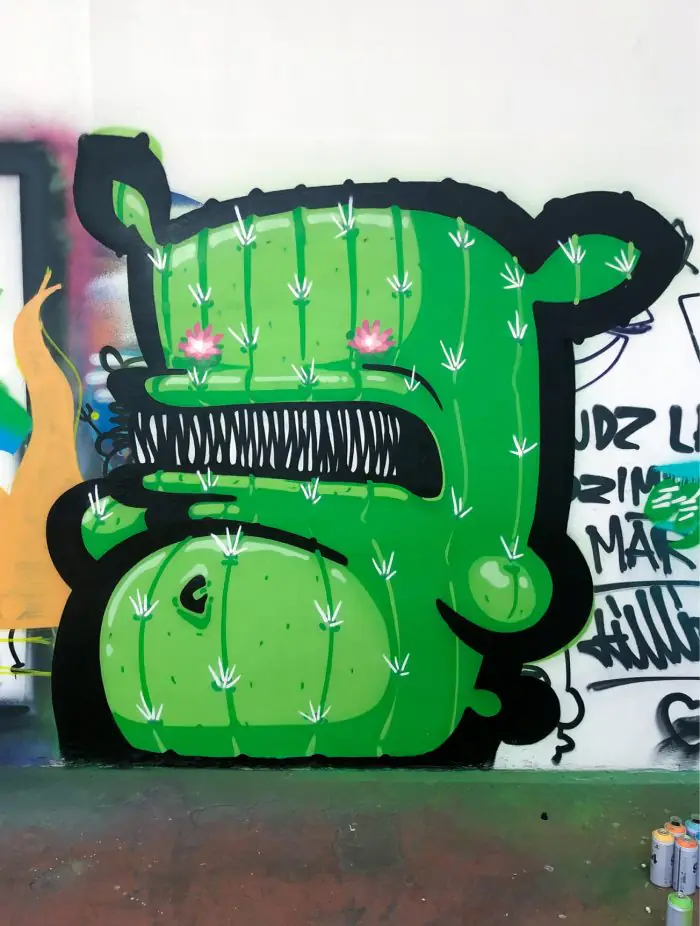
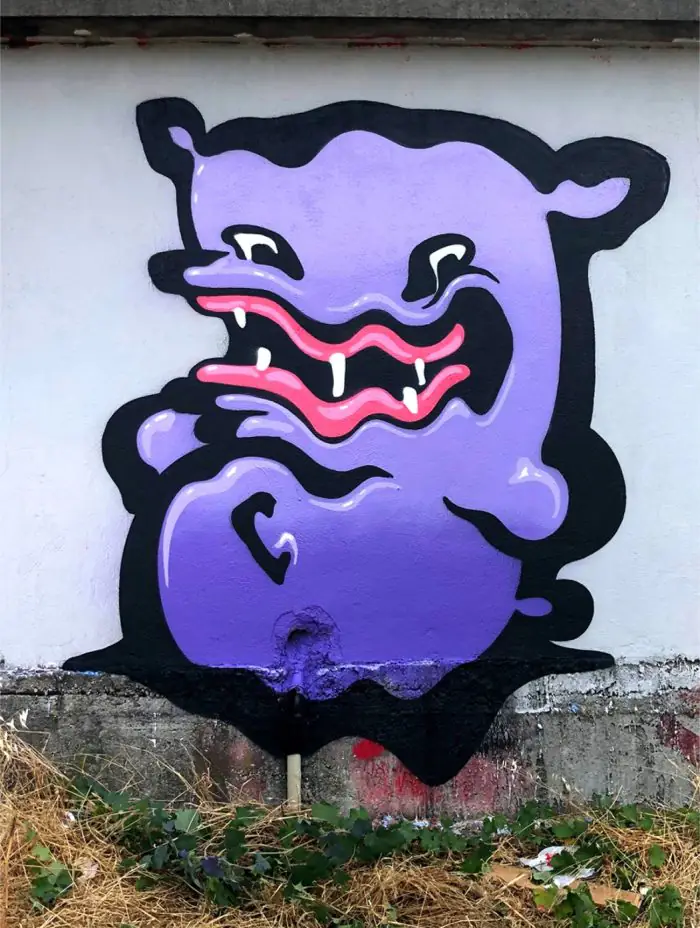
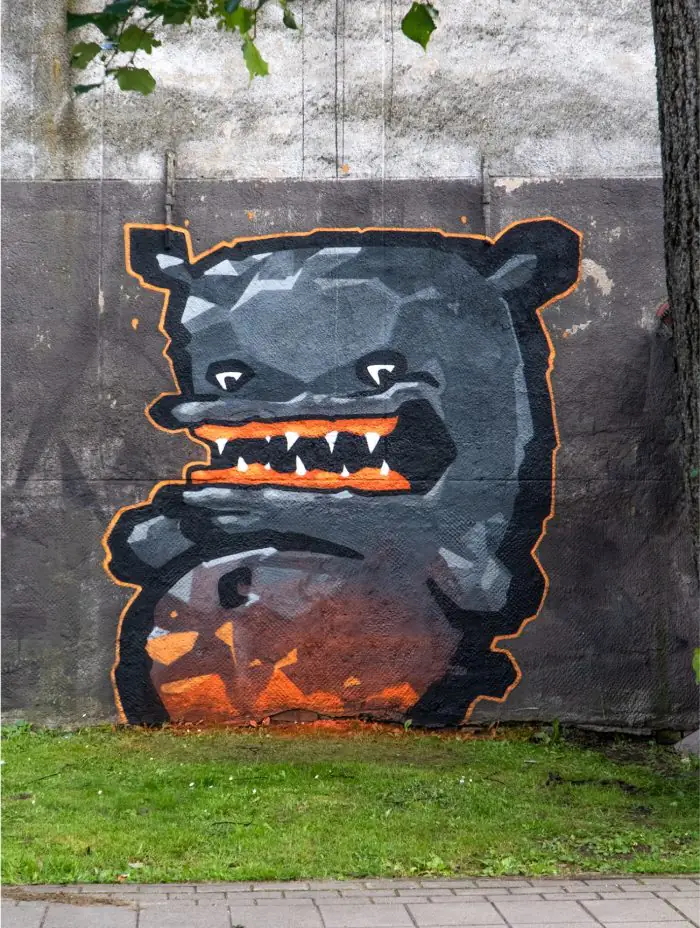
You’ve said that your first interest in graffiti was sparked by the sense of mystery. Is it somehow connected to your choice to hide behind an old grandpa?
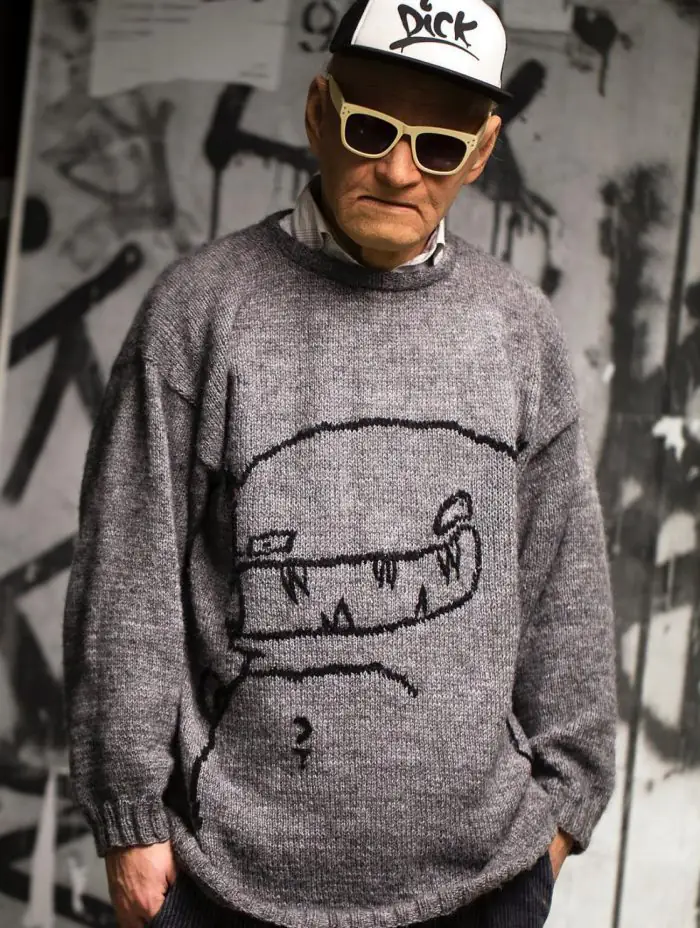
Yeah, definitely. My alter ego grandpa John Dick has been alive for more than a decade now. It all started as a funny experiment and, as you can see, the joke dragged on and now I have a designated area for Grandpa John accessories and clothing. It’s literally like living together with an older person.
Plus, there’s something intriguing about being anonymous. So many times it allowed me to observe conversations about the KIWIE without revealing my identity.
As for the Grandpa, John’s character came from the idea of an old, eccentric guy who works in a bakery by day and transforms into a mysterious artist by night. I’ve been developing the KIWIE universe for the past 10 years, and Grandpa is a central figure in this world. He’s the original artist, the one who started it all.
My streetwear brand is inspired by this universe. Imagine an art studio where Grandpa experiments and paints with all sorts of materials and sometimes dangerous substances: in one of the experiments Kiwie monster became alive and escaped in the city. KBI [ Kiwie Bureau of Investigation ] agents are on the hunt, while Grandpa tries to protect his creature. Each new collection is like a crime scene, with clothing items representing the evidence.
We’re currently working on expanding the universe and probably will create something like a comic book that will tell the full story. The pandemic actually gave the inspiration to create the Kiwie story that could be turned into series or animation long after I’m no longer here. One of the many things in my bucket list.
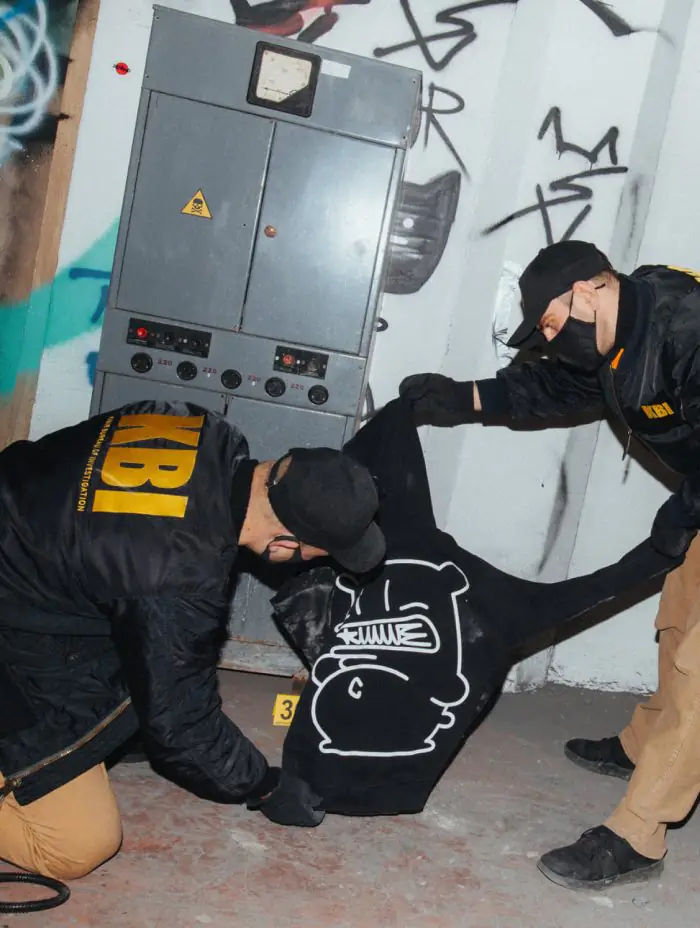
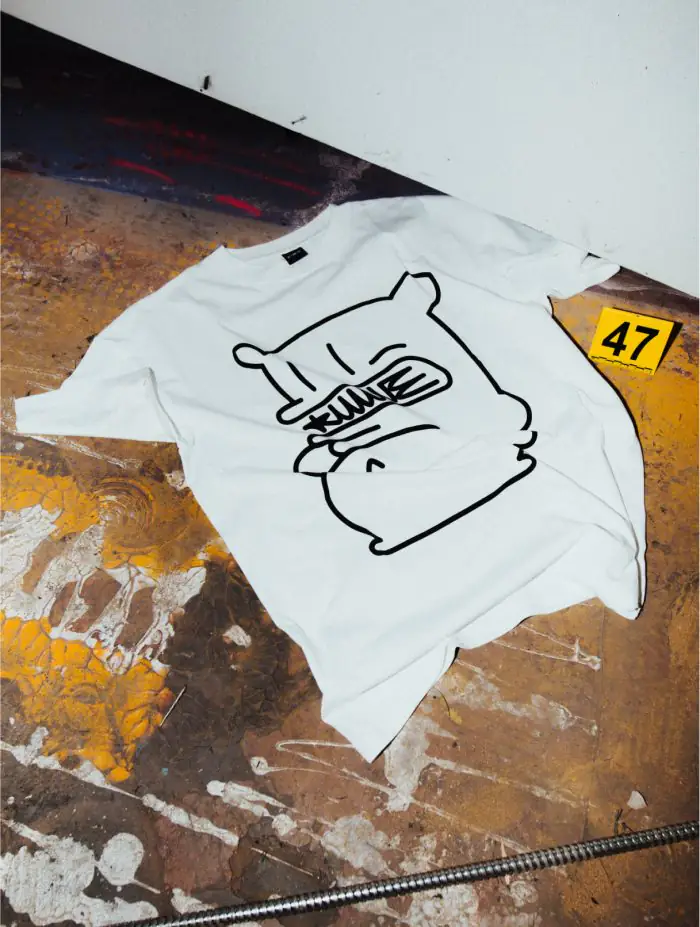
The last question about Grandpa John: don’t you feel like a hostage to this character?
Yeah, I understand what you mean. I’ve often been thinking about ‘killing’ him. It’s a strange thing to say, I know. What began as a simple art project has evolved into a real performance. But actually I like it, I appreciate this experience even if it sometimes complicates simple everyday things.
As for diverse experiences, you do a lot of collaborations not only with other artists but also with brands and serious businesses. What are your thoughts on commercialising art?
I’ve been thinking about this question for my whole life. You know, it’s a classic dilemma. Every artist faces it: you want to do pure art, but where would you get the materials to do so? Money is the fuel and not everyone is fortunate to have the pot of a Lepricon at his disposal. So, you have to come up with an idea for where to get all this fuel from.
In New York I saw Takashi Murakami in person and dug deeper into how he works. I found out that he has a team of over 70 people. It opened my eyes. I thought, “I have a lot of projects and even more stored in the shelves under “one day”. To do it all alone it will take me 3 lifetimes, so naturally I need to establish a team. And while working on Kiwie stuff, we can work with bigger projects and brands, helping them solve their creative problems, funnelling the profits into growth.”
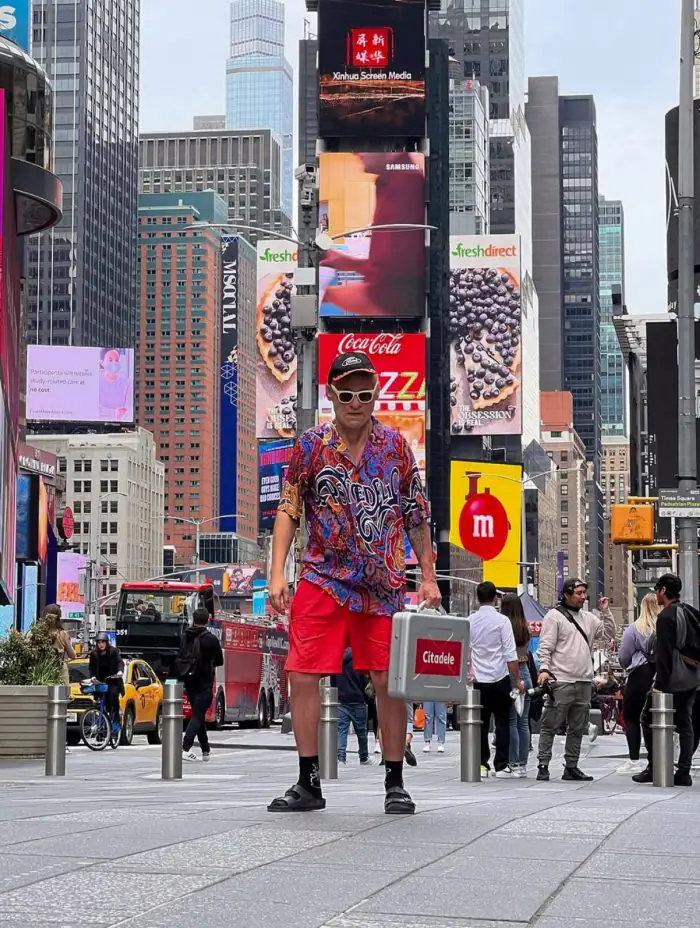
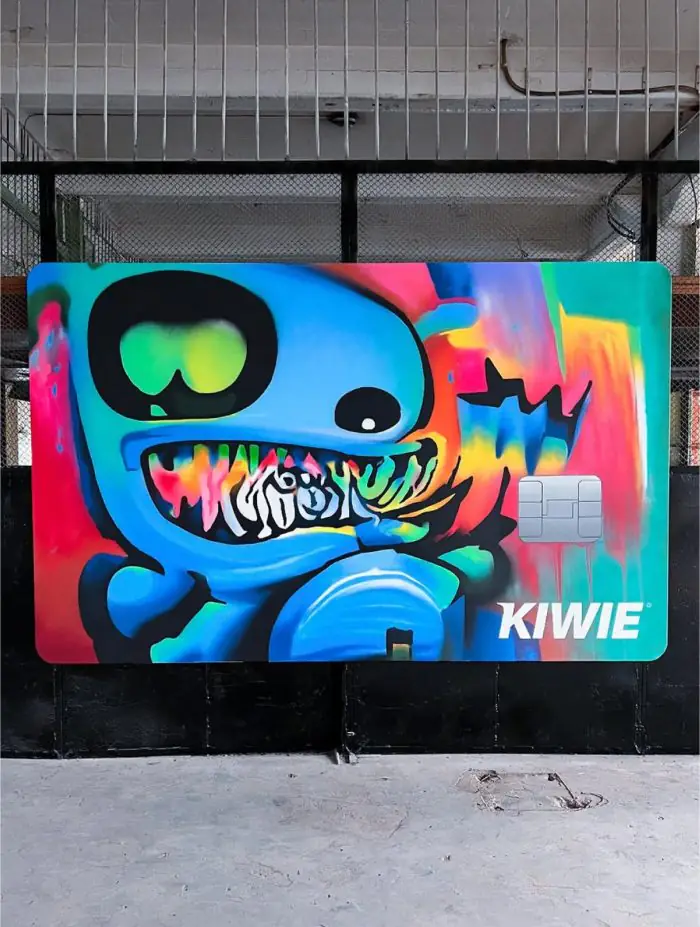
So, the biggest challenge I’m currently tackling is separating these two aspects of my work. First of all, there’s KIWIE, where I focus solely on street art and everything related to KIWIE original projects and products. We have a studio where I experiment with different techniques and create pieces for sale.
Then, I know that apart from art, I have an ability to connect things and figure out the best solutions that didn’t exist before. It’s called ‘creative problem-solving’. So I founded KIWIE STUDIO — a studio dedicated to collaborations and focused on helping with the creative direction and coming up with crazy solutions for brands. For example, we’re working with digital art, 3D, and experimenting with new technologies like blockchain, Ai, NFT, all the buzz words.
Of course, the art world is a business. Life is life: you have to sell your work, market yourself, and navigate the system in order to grow. But at its core, art should be only about freedom. Like the saying goes—“If there is no freedom, it’s not art”. And that’s also ok. There’s no right or wrong, it’s just different things.
I remember being in Bali. I know all those stereotypes: you go there to meditate and find something within yourself. Funny enough, but it was actually like that. I woke up, hopped on my motorbike, went to the spot the locals suggested, and drew. They were happy, I was happy, and it was pure artistic freedom.
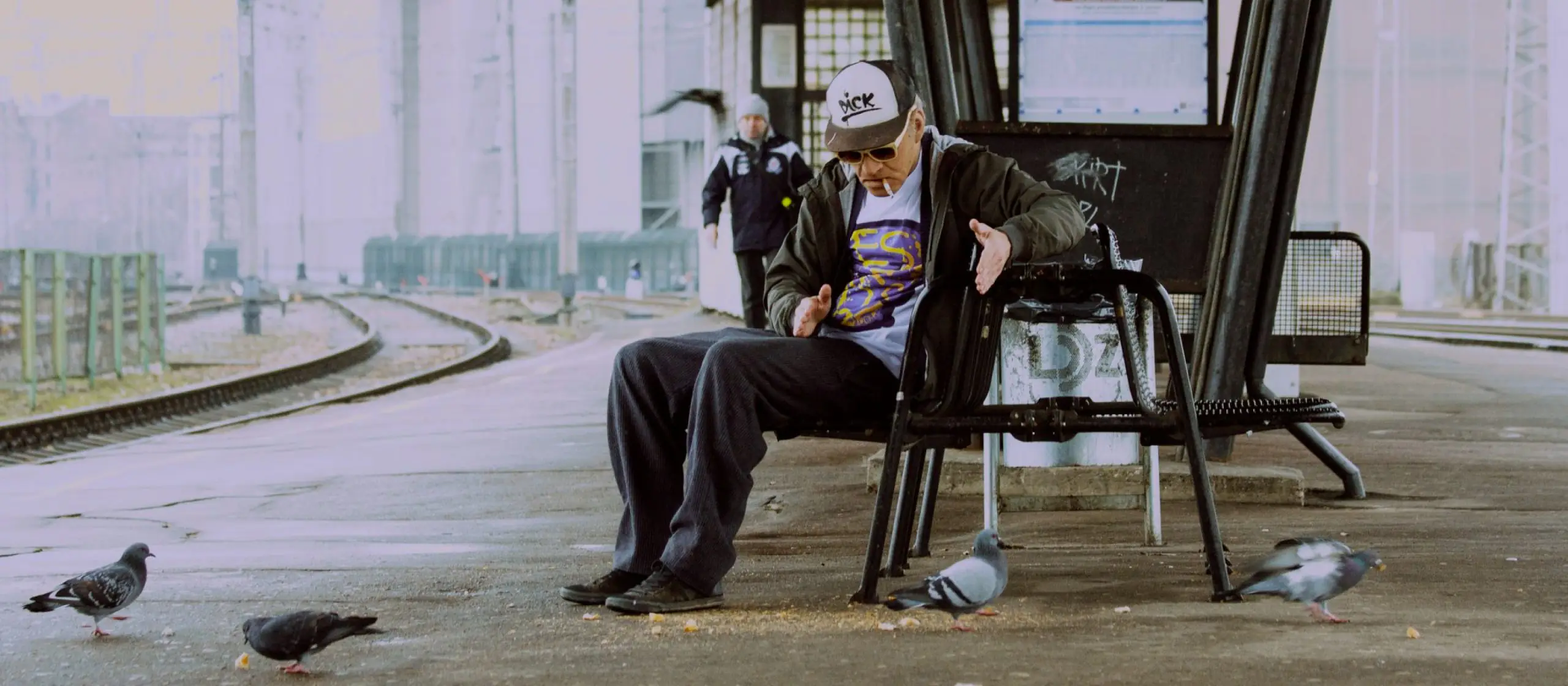
Asia and its art market offer great opportunities for an artist today. But after many years of travelling, working on international projects, you returned to Latvia. Why?
I’d say that I’m here in Latvia due to a series of coincidences. I believe in thinking globally and acting locally.
Riga offers a nice blend of accessibility and affordability, with minimal traffic and reasonable living costs. Plus, I’ve grown to love winters here. After spending time in the middle east, I’ve reconsidered my views on cold weather. It’s a common experience, isn’t it? We often find ourselves drawn back to the familiar things from our childhood. It’s in our DNA and we cannot escape it. It’s a tribe thing.
In Latvia, we have really powerful artists, and new ones are constantly emerging. However, the biggest challenge for artists here is selling their work.
On a global scale, established institutions support artists and facilitate art sales. Unfortunately, that’s not the case here. Our local market is limited, with a relatively small collector base. It will take time for the Latvian art scene to mature and gain international recognition. Luckily because of the internet it’s getting better every year.
Speaking about the local art scene, can you name 3 Latvian artists you’re excited about right now?
Definitely Mikelis Murnieks. He’s a good friend of mine, and whenever we meet, we discuss ideas, sketch, and exchange thoughts and projects.
Another guy is Artūrs Analts, a designer. I admire his work and always enjoy observing his creative process.
Ēriks Caune is another inspiring artist, a painter, with whom we have painted numerous murals together, the most famous “Saule, Perkons, Daugava”.
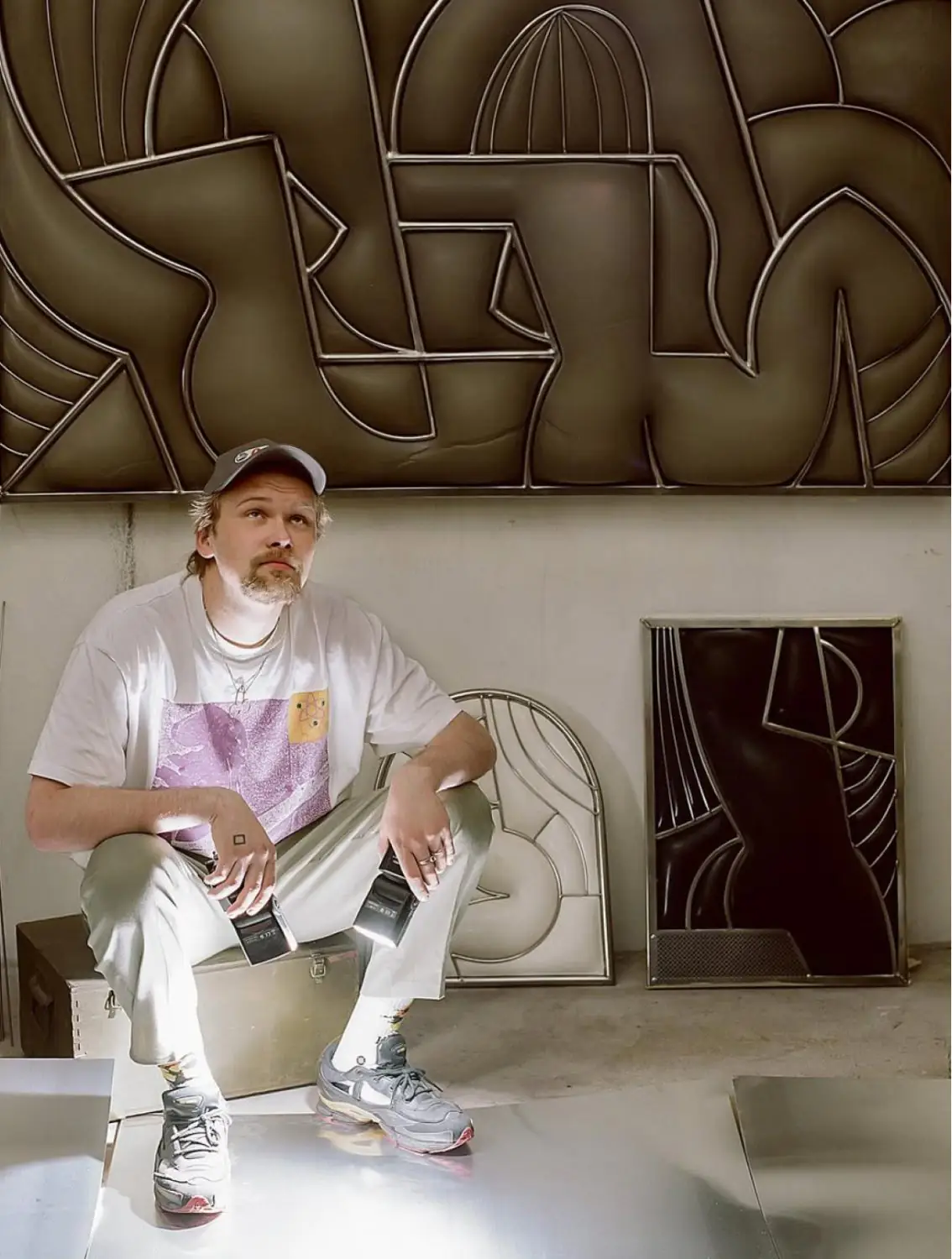
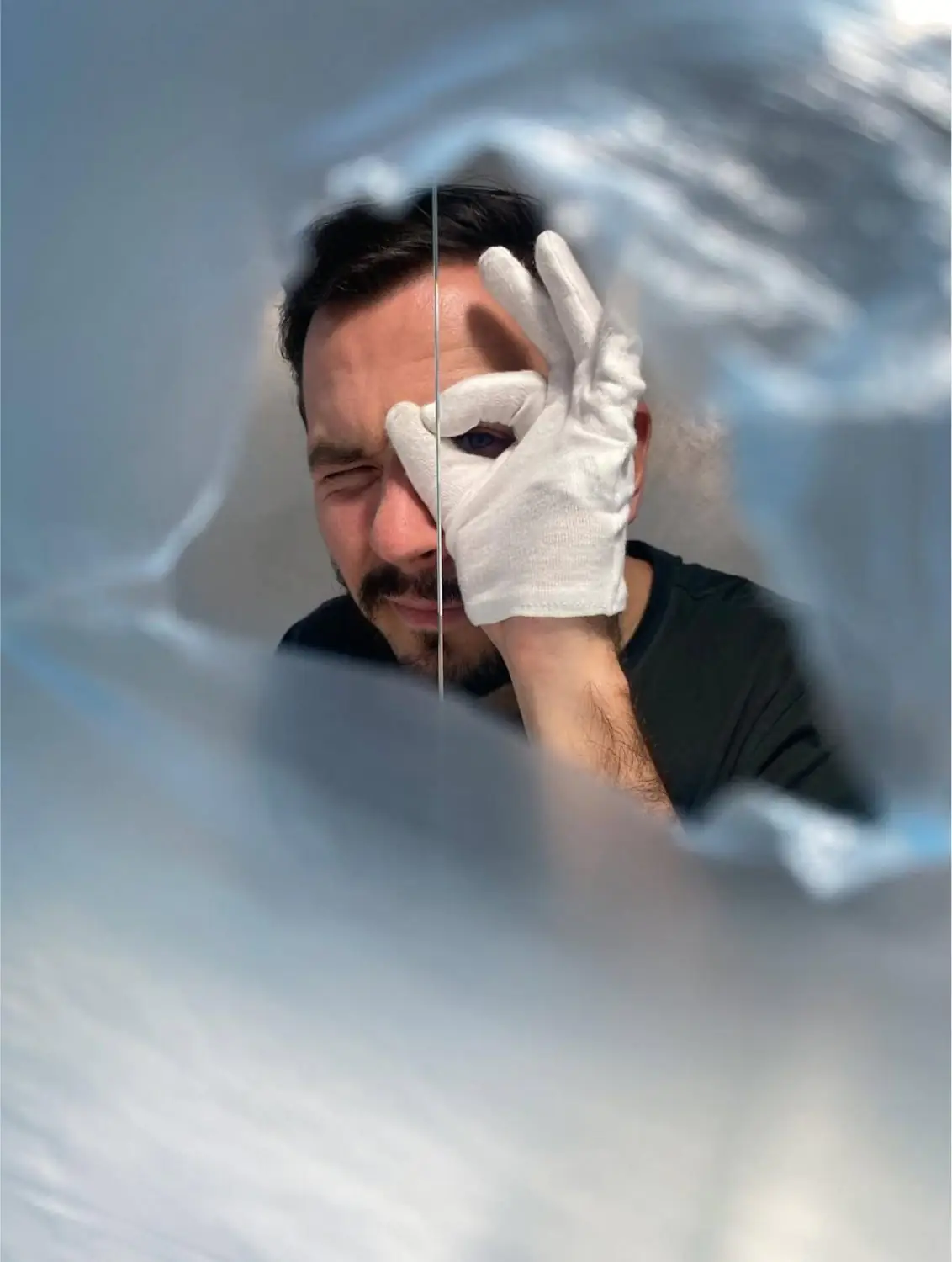
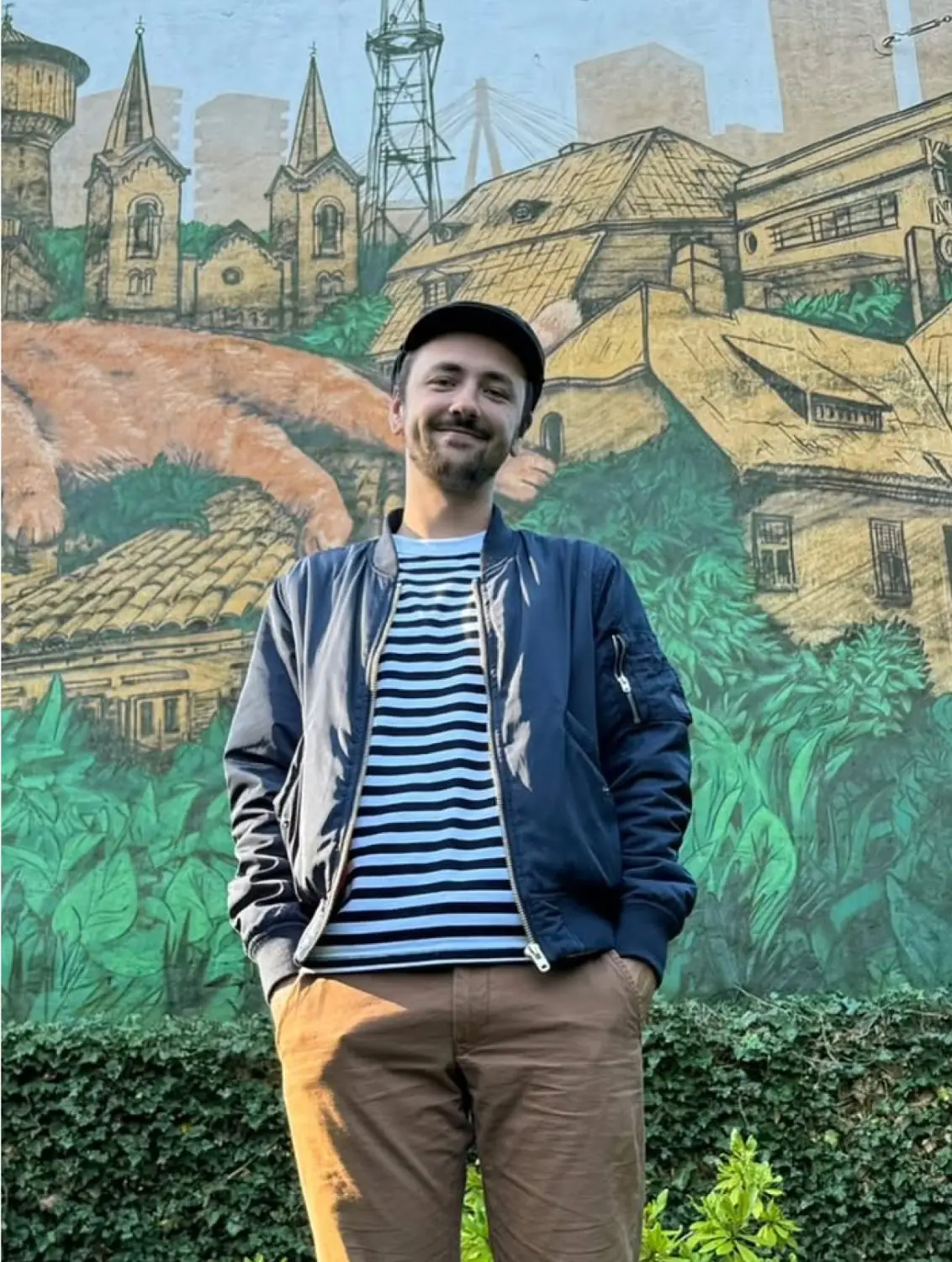
What about artists abroad?
I know it sounds a bit like a cliche but I’m drawn to older artists, on the sidelines checking what young artists are doing. Studying art history, I admired old artists’ long journeys. They’ve all experienced what I’m and what I will go through and so I always wonder what insights they can share.
For me, Takashi Murakami and Jeff Koons are huge inspirations. Koons, in particular, has created iconic works that everyone recognizes of course. I remember seeing his exhibition in Amsterdam, and the balloon dog is such a strong and memorisable symbol. it. Banksy, of course, is another amazing figure, especially now with his recent actions.
And finally, how would you describe the concept behind the KIWIE brand?
When you look at the world, its unexpected twists and turns, and incredible coincidences—it’s mind-blowing. That’s life. It’s fascinating. I try to approach everything with a beginner’s mind. We’re taught to fear mistakes, but the truth is, the more mistakes you make, the faster you learn and grow. KIWIE is a huge experiment on what happens if an image is repeated enough times to merge with subcultures, becoming part of culture.
My main principle is to combine elements that do not belong to each other, creating something new. I’m always drawn to ideas and combinations that haven’t been explored before. Hence KIWIE the monster is always kinda the same character, but not really. I can guarantee—you’ll never find 2 identical KIWIE artworks.
There is nothing right, just as there is nothing wrong. Everything is a game. You either play it and participate or sit in the auditorium watching how everybody else is playing. It’s a decision. But once you have made your decision, you better make it count.
